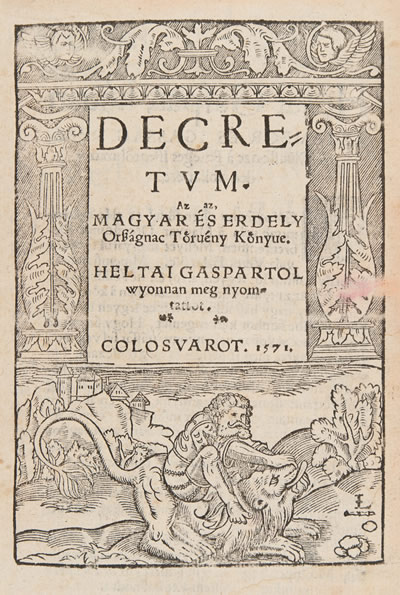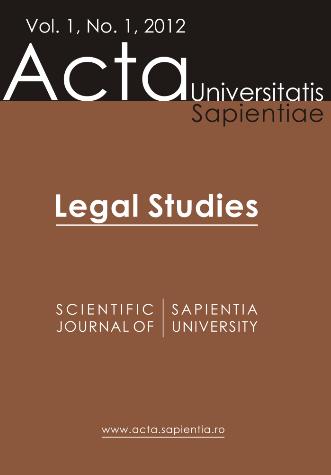2024-04-20 09:02:01
History of legal education in Cluj-Napoca
The beginnings of legal education in Cluj (Hungarian: Kolozsvár) as a form of higher education can be traced back to 1774, when Habsburg Empress Maria Theresa establishes a Faculty of Law within the Royal Academic College, a higher education institution originating from the former Jesuit College founded back in the 16th century.
The Faculty of Law comprised three chairs (one being the chair for Transylvanian law), with German and Latin as languages of instruction. However, very soon (in 1784) the university status has been withdrawn by Emperor Joseph II, and for the next almost one hundred years, legal studies have been dispersed as two-year long courses of law within the three institutions of secondary education of the city: the Roman Catholic Royal College, the Reformed College and the Unitarian College. The Revolution from 1848 caused a disruption and a lasting hiatus in the legal education process that would only disappear in 1863, when the Academy of Law was established. Extending duration of studies to three years, the academy already acted as a precursor to the modern university, and actively advocated the need for founding a university of Humboldtian type.
1872 marks the beginning of a new era as far as higher education in the field of legal sciences in Kolozsvár/Cluj is concerned: it is the foundation year of the Franz Joseph Royal University. The Faculty of Law and Administrative Sciences was the largest of the four faculties, duration of studies being set for four years, and the Juris Doctor diploma being obtained after several sets of final examinations. Language of instruction was Hungarian, but among students enrolled were Hungarians, Romanians, Jews, Armenians and other Transylvanian ethnicities as well.
After WWI, in 1919 the faculty body and part of the student body took refuge to the Hungarian city of Szeged, while in their stead, in Kolozsvár/Cluj a new university was founded: the King Ferdinand University, offering instruction in Romanian. Its Faculty of Law had, similarly to the former Hungarian university, the greatest number of students among faculties. Even more, the Academy of Law from Nagyvárad (Romanian: Oradea) was merged with the Faculty of Law in 1934. Student body comprised mainly Romanians, but also Hungarian and also Jewish students. In 1940, following the Second Vienna Award, the former Franz Joseph Royal University returned to Kolozsvár/Cluj from Szeged, while, in parallel, the King Ferdinand University had to take refuge in Nagyszeben (Romanian: Sibiu).
After the conclusion of WW2, starting with 1945, the Romanian and the Hungarian universities both continued their activity, now based on the Royal Decree of King Michael of Romania, in the city of Cluj/Kolozsvár, thus creating a unique situation: two faculties of law, functioning in parallel, one offering instruction in Romanian, and the other one mostly in Hungarian. However, the Soviet reform of the education system in Romania, launched in 1948, had a callous disregard for the consolidated values of traditional legal education, and in this sense, not only did it lower the duration of studies to three years and sought to shift interest from law to ideology, but also introduced the so-called "Law courses" functioning near institutions of the judicial system, where Communist Party-selected students were fast-tracked to obtaining a degree in law. Between 1951-1953, the two faculties of law were even separated from the structure of their universities and merged into a mere Institute of Legal and Economical Sciences, with a Romanian and a Hungarian section. In 1959, the Central Committee of the Romanian Communist Party decides the unification of the two universities (the Romanian Babeș University with the Hungarian Bolyai University). The Faculty of Law within the newly resulted Babeș-Bolyai University offered instruction in Romanian language.
After the 1989 Revolution, the Faculty of Law of the Babeș-Bolyai University granted separate admission for students belonging to the ethnic minorities of Romania, without organizing a Hungarian study line (like other faculties). In the timeframe between 1990-2001, a number of private universities are founded, with faculties or departments of law, taking into the consideration the rapidly growing need for legal practitioners and other law-related professions.
In 2010, the Sapientia Hungarian University of Transylvania introduced legal studies in its list of specializations at undergraduate level (as bilingual, Hungarian-Romanian studies, finalized with a BA in law).

The first law book printed in Hungarian in Transylvania: the Tripartitum of István Werbőczy was published in Cluj/Kolozsvár in 1571.




